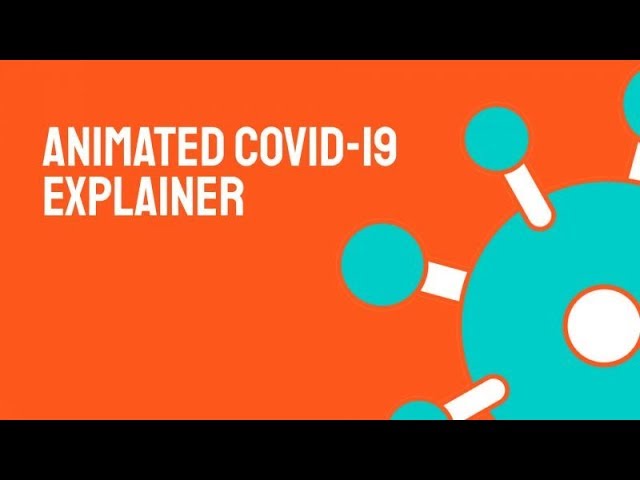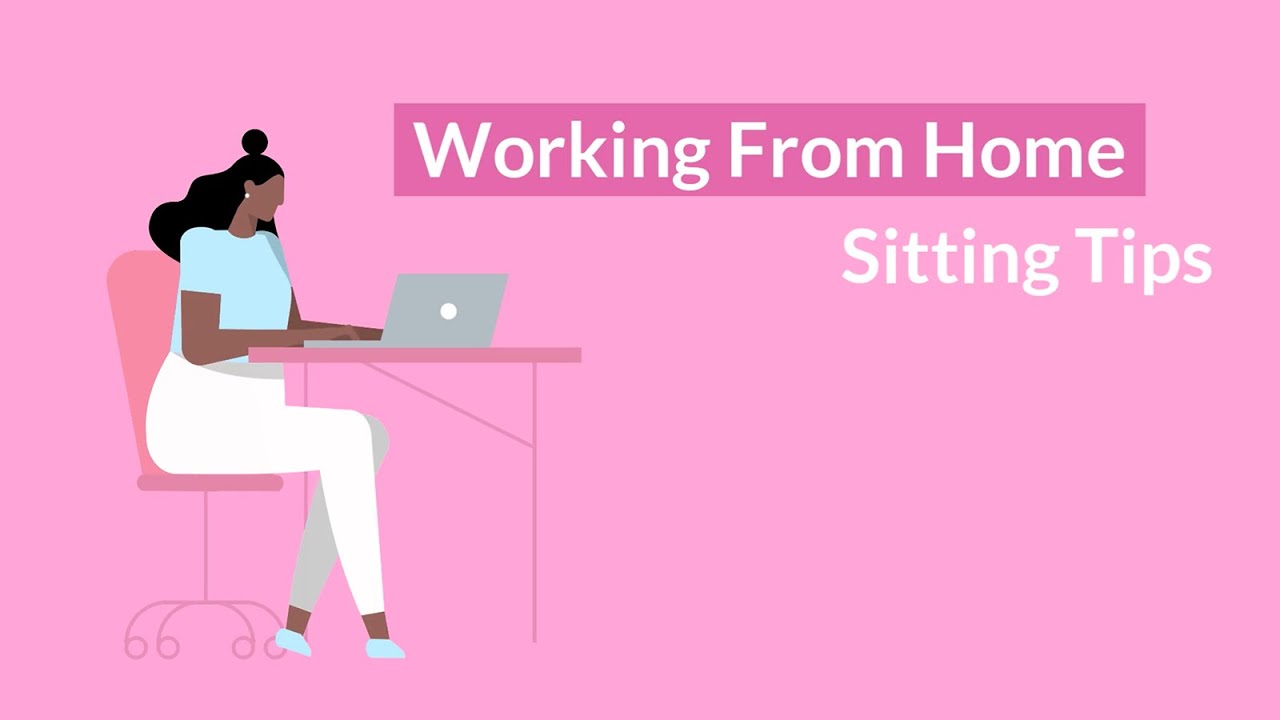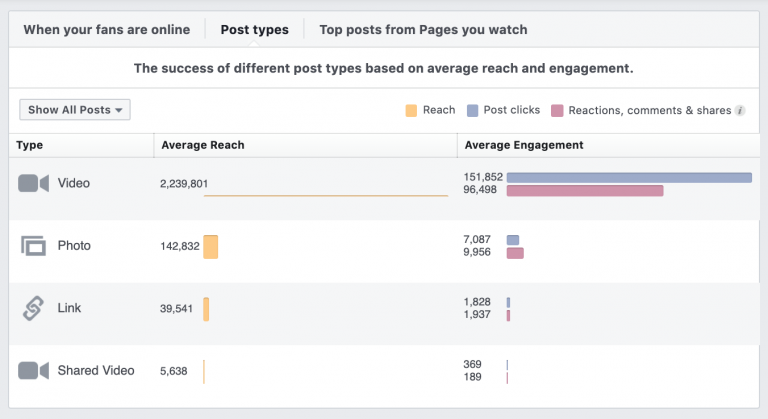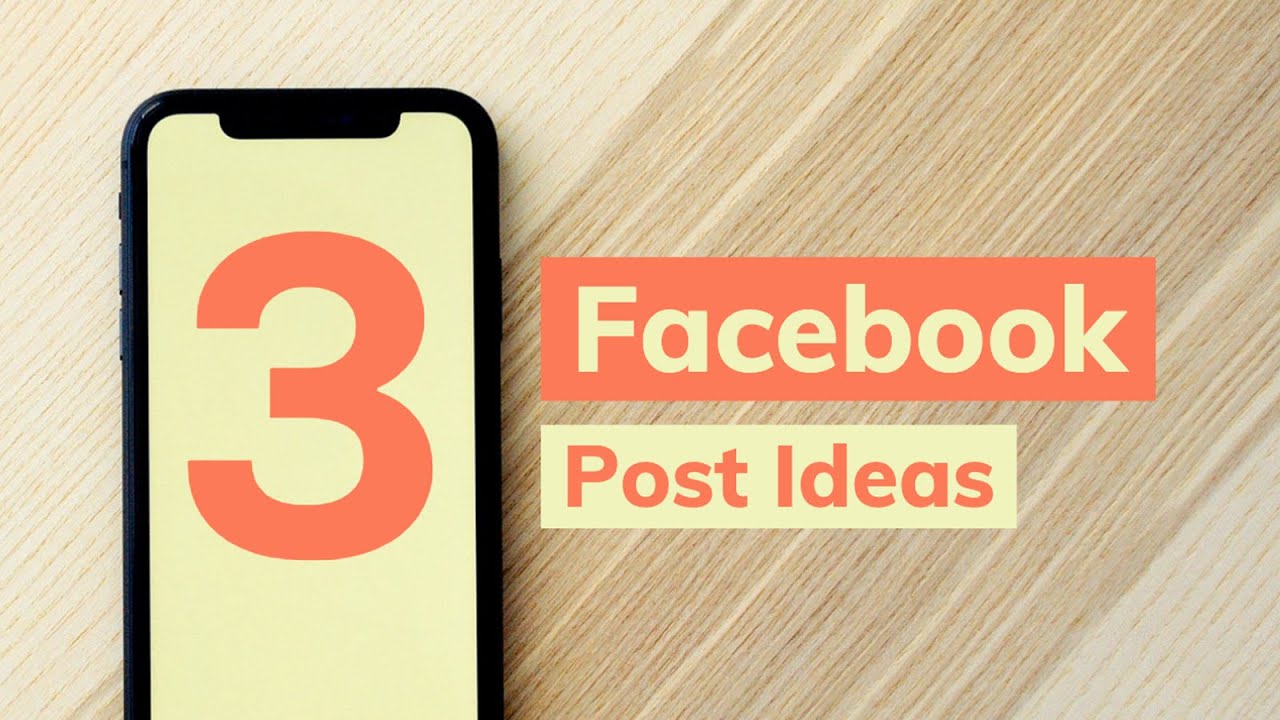The Facebook algorithm has long been shrouded in mystery, causing marketers everywhere to curse its name as their organic reach takes a nosedive.
If you employ Facebook marketing as a vital part of your brand’s social strategy, the success of your content depends on the algorithm and what it looks for when it ranks content. Learn how to use Facebook’s algorithm to your advantage as we walk you through what it is, how it works, and how to beat it.
Spoiler alert: never underestimate the algorithm-swaying powers of video.
What is the Facebook algorithm?
In simple terms, the Facebook algorithm determines what content a user sees when they open the platform.
This decision is reached based on a giant set of behind-the-scenes instructions that make up “the algorithm”. Facebook’s algorithm looks at factors like post type, interaction history, and how many of Facebook’s core values the content aligns with (more on that later).
The algorithm doesn’t just decide the order of the content; it also determines whether content shows up at all.
Here’s a haunting stat: the average reach of an organic post is only 5.5% of a Facebook Page’s followers. Just over five percent! The algorithm is the culprit that turns your 8000 followers into less than 450 pairs of eyeballs. But it does have its reasons.
Why the Facebook algorithm is actually your friend
Contrary to popular belief, Facebook’s algorithm is not just an arbitrary, power-hungry, money-grabbing machine designed to torment marketers everywhere. For the most part, it’s actually a force for good.
In a sea of social posts, the algorithm aims to connect Facebook users with the content they want to see most. It does its best to create a better Facebook user experience, encouraging people to spend more time on the platform and engage with more content. Ideally, your content.
Next time your organic post doesn’t do as well as you hoped, don’t blame it on Facebook’s algorithm; the algorithm worked. Think of poor organic results as the algorithm telling you, “people don’t want to engage with this kind of content.” It’s painful, but this kind of information is valuable.
Study up on what we do know about the all-knowing algorithm — its core values and ranking factors — so you can put them into practice and see the results for yourself.
Let’s dive in.
Digital marketer Dennis Yu explains what the Facebook algorithm is and how it works.
What the Facebook algorithm values in the News Feed
With every algorithm update, Facebook relies on a list of core values to guide their work. These core values reflect what, according to Facebook, their users value the most in their News Feeds.
The three core values that most significantly impact News Feed rankings are:
1. Friends and family first
Facebook uses its algorithm to prioritize content from friends and family above anything else. That means you are more likely to see Aunt Linda’s rant about how millennials are killing the napkin industry before you see the trending napkin news yourself. Lucky you.
Since it was first introduced in 2015, nothing has out-ranked Facebook’s goal of keeping friends and family connected.
2. Content that informs and entertains
After friends and family, Facebook values content that informs or entertains. This includes current news stories (hello, napkins), funny videos, and stories about celebrities that a specific user might find interesting.
If you are a brand, Facebook suggests creating content that your audience finds new, interesting, and information. This increases your chances of the algorithm plonking your posts in front of your target demographic.


Try turning current events and news into an informative explainer, like this one.
Read about how one brand used Biteable to create two viral Facebook videos.
3. Accurate, authentic content
Facebook found that users don’t care for ingenuine content like spam, clickbait, and misleading or sensational headlines. The Facebook algorithm is trained to spot this type of inaccurate, inauthentic content and demote it from a mile away.
Facebook’s advice on the algorithm front: always use clear headlines and avoid spreading misinformation.
Create videos that drive action
Activate your customers or team with impactful, on-brand videos.
Facebook algorithm ranking factors for 2021
We’ve collected everything we know about Facebook’s current News Feed ranking factors and put it all in one place — right here. It’s certainly not an exhaustive list, but it includes just about everything Facebook let slip about the inner workings of its algorithm.
Prove you’re worthy of a spot in your follower’s News Feeds with content that ticks every single algorithm-ranking box.
Engagement levels on organic posts
Before it shares your post with a wide audience, Facebook’s algorithm looks at how many likes, reactions, comments, and shares the post initially receives. The more positive engagement a post gets, the better chance the algorithm ranks it highly. In contrast, any negative engagement drastically reduces the likelihood of the Facebook algorithm expanding your reach.
Digital marketer and Facebook expert, Dennis Yu, outlines this concept using a points system, where points reflect how the algorithm values each interaction:
- 1 like = 1 point
- 1 comment = 6 points
- 1 share = 13 points
- 1 negative interaction (hide this post, unlike this page) = -100 points
As you can see, Facebook really doesn’t want to show people content they won’t like. You’ll have to work hard for a whole lot of positive interactions to make up for a single negative.
How to beat it: Do more of what works and less of what doesn’t. Create genuine, authentic content and avoid organic content that looks like an ad. People don’t like News Feed posts that look like ads.
(But for times when you do need to create Facebook ads, we’ve got you covered.)


Do more of what works, like video. Create a share-worthy video that your audience will want to tell their friends about.
Meaningful content that sparks conversation
Facebook’s algorithm values and predicts what types of content users are likely to engage with in a meaningful way. By “meaningful,” Facebook is referring to stories users spend time reading, videos they spend time watching, and content they share and talk about with their friends. If it gets people talking in the comments section, Facebook is a fan.
How to beat it: Understand the audience you want to reach, then create trending content relevant and interesting to that audience. Make something share-worthy, like a video.
How Facebook users interact with a brand
How often users interact with a brand’s content sends a massive signal to the algorithm’s ranking brain. People who regularly share your posts and comment on your content are more likely to see all your posts than someone who offers the occasional pity like.
How to beat it: Post consistently and often. Encourage interaction with your page as much as possible. Create a community in your comments and relationships with your biggest digital fans.
User interactions ranked by post type
If a Facebook user interacts with a lot of video, the algorithm shows them more videos. If they can’t help but click on links, Facebook is more likely to stock their News Feed with links.
If you aren’t sure where to start, keep this in mind: Facebook users engage with video more often — and in more meaningful ways — than any other type of post. So much so that Facebook openly ranks video towards the top of the feed.

Video eats other post types for breakfast.
Facebook Live generates the best engagement of all video posts, and the algorithm rewards the use of them handsomely.
But it isn’t just live videos that do well on Facebook. When the Biteable Lab conducted an experiment to see how video ads fared against image ads, video saw more extensive reach, more clicks, and a better ROI.
Alongside video, Facebook has hinted at an increase in Facebook Group and Event content making its way onto people’s feeds in 2021 — two giant spaces for community engagement.
How to beat it: Use lots of video, start a community group, and make use of Facebook events.
How Facebook’s algorithm ranks video
Video plays such a massive part in Facebook’s News Feed ranking algorithm that there’s a sub-category of ranking factors just for video.
According to Facebook, users want more quality, original video content. Facebook ranks these videos based on:
Loyalty and intent. Your video gets extra algorithm points if Facebook sees people seeking out and sticking around for your videos. Repeat viewership and users who search out your video rather than stumble across it on their News Feed are algorithm gold.
Video and viewing duration. Unlike video ads, the longer an organic Facebook video, the better — as long as you keep viewers engaged. Facebook’s algorithm likes videos over three minutes long that hold viewers’ attention for at least one minute. The more of your video people watch, the more the algorithm likes it. If viewers consistently watch your videos from start to finish, you’ve got it made.
- Originality. Facebook doesn’t like repurposed or unoriginal video content. So much so that they updated the algorithm to limit distribution of unoriginal content. Be on the safe side and create original video content with ease using the Biteable video maker. We’ve got 1000+ customizable templates to make custom video creation a breeze.
How to beat it: Create original, quality video content, ideally over 3 minutes in length.


Start with a ready-to-edit video template like this one and turn it into the kind of original content the algorithm loves.
The timing
There was a time when Facebook sorted News Feeds entirely in reverse chronological order. That is certainly no more, but a post’s timing does play a part in whether or not people see it. The more recently something was posted, the more likely the algorithm shows it to your followers.
It’s best to post at a time when your most active followers are online. This is when the algorithm is watching to see how your audience reacts and engages with your content.
How to beat it: Post when your audience is most likely online. Use your analytics to see when they’re on Facebook, and schedule your content to drop when they’re around to see it.
History of the Facebook algorithm
The Facebook algorithm is continuously evolving to meet the needs of the platform and its users. This is great, but it also means staying on top of changes as they happen.
Take a walk down memory lane to get a good idea of just how much and how quickly Facebook’s algorithm has changed over time.
You can’t avoid future brutal algorithm updates, but you can sleep a little sounder knowing it’s happened before, it’ll happen again, and it’ll just make you a better, more adaptable marketer.
2009
The algorithm as we know it is born when Facebook decides it’s time to move on from sorting News Feeds chronologically. Instead, it ranks posts based on popularity.
2011
The popularity contest is somewhat replaced with a News Feed that prioritizes the most relevant content for every user. It’s a mixed-bag of high-engagement content and posts from family and friends.
2015
Facebook hands some control back to the people with the option for users to choose which posts they “see first” at the top of their News Feeds.
2016
The Facebook algorithm begins prioritizing live video. Increased engagement means video shows up more frequently in people’s News Feeds.
Facebook decides it is a platform for connecting with friends and family. The algorithm makes posts from friends and family the main objective of the News Feed and hands them the #1 ranking spot.
2017
Facebook experiments with prioritizing video content based on completion rate, weighing reactions more than likes, de-ranking spam and click-bait, and giving a higher ranking to web pages that load faster. All of these changes stick around.
2018
Facebook instructs its algorithm to prioritize meaningful social interactions and content from trusted and local news sources.
The meaning of “meaningful social interactions” throws marketers for a loop.
2019
Facebook updates its algorithm to prioritize the distribution of quality and original video content.
Facebook also makes strides towards better transparency on the platform, giving users (and marketers) more information about how content is ranked in their News Feed and why Facebook’s algorithm chose to show it.
2021 and beyond
The algorithm we see today is a smarter, more evolved version of every algorithm before it. And it’s only going to keep getting smarter.
There’s no telling what Facebook has in store for future algorithm updates, but it’s likely to keep heading in the same direction: quality, meaningful content that adds value to a user’s News Feed experience. Happy Facebook users = eyeballs for your brand. All you have to do is prove to the algorithm that you deserve to be there.
How to beat the Facebook algorithm with Biteable
Use Biteable, the world’s simplest video maker, to create an algorithm-approved video in minutes. Start with a video template designed for Facebook or let your creativity fly with a blank canvas.

